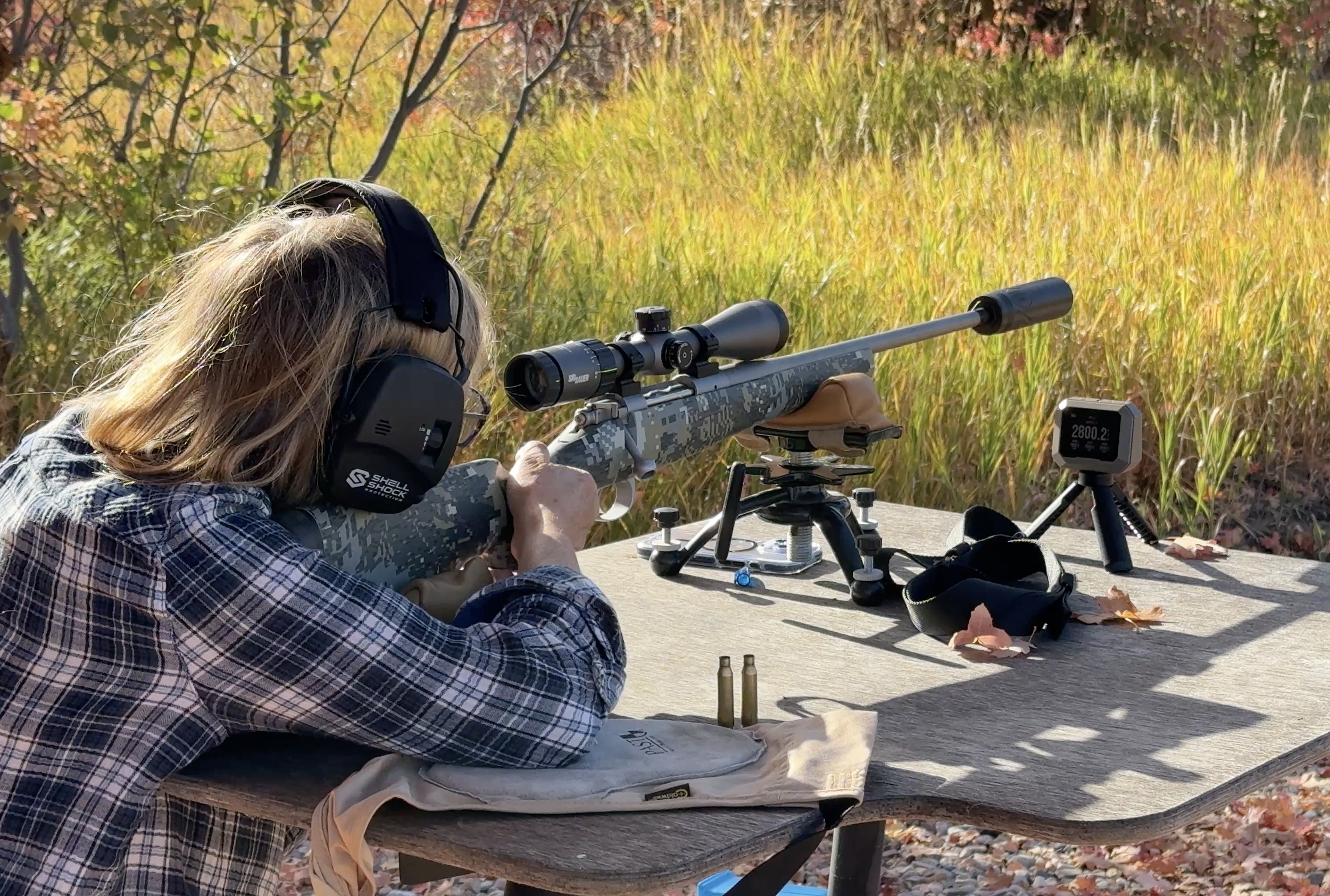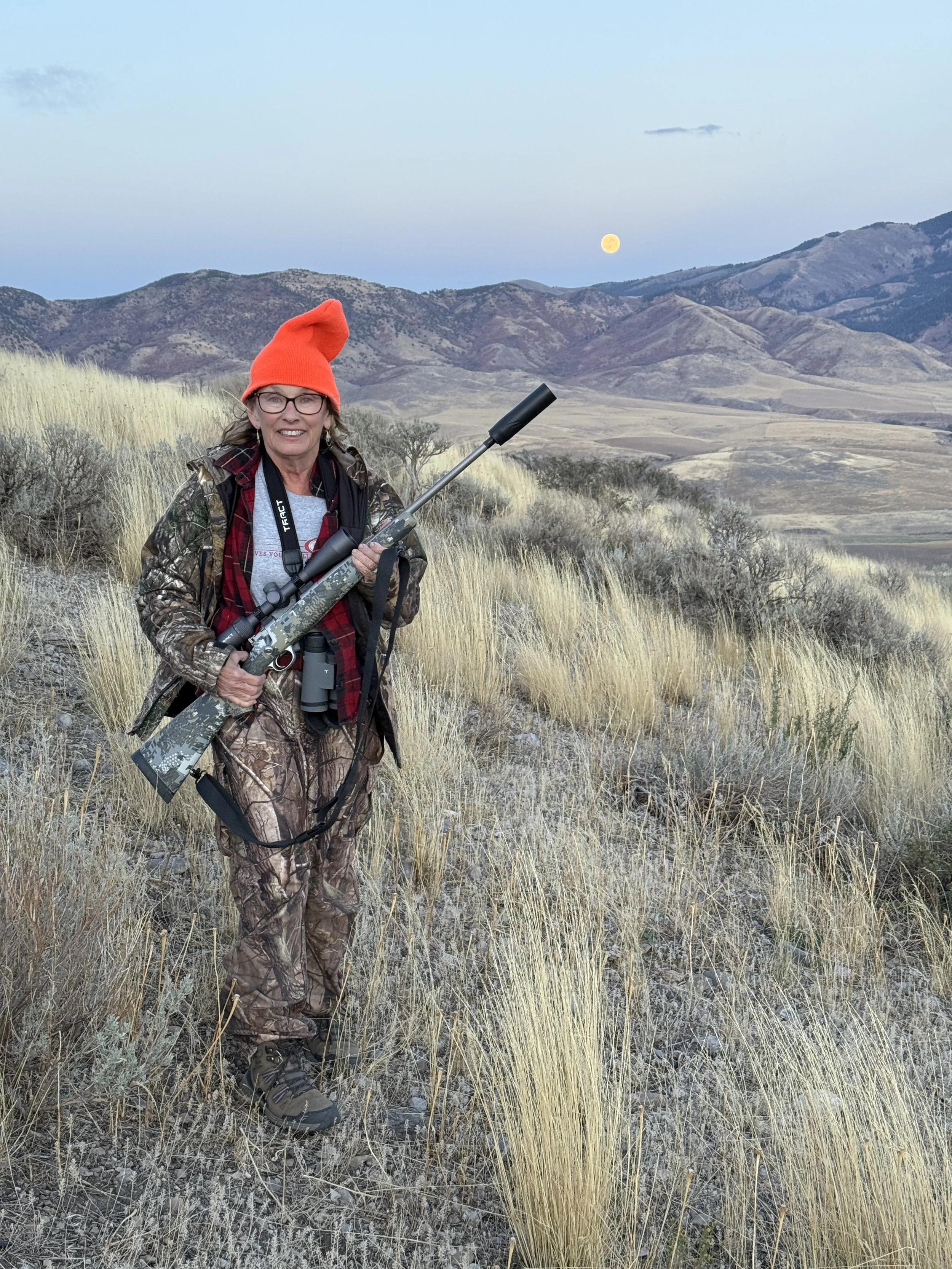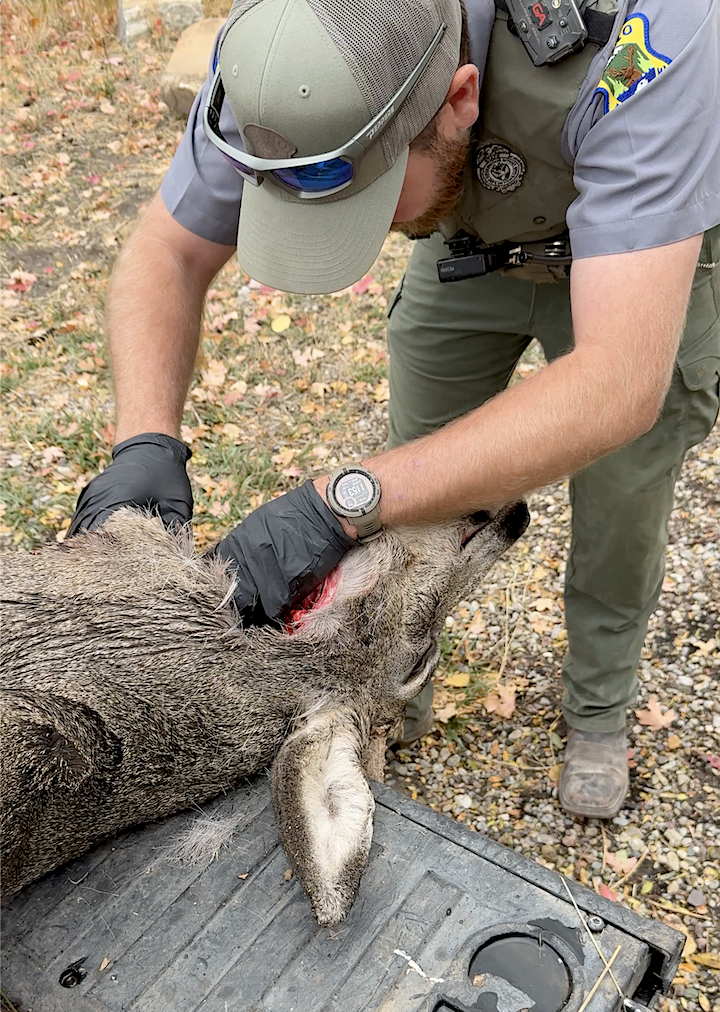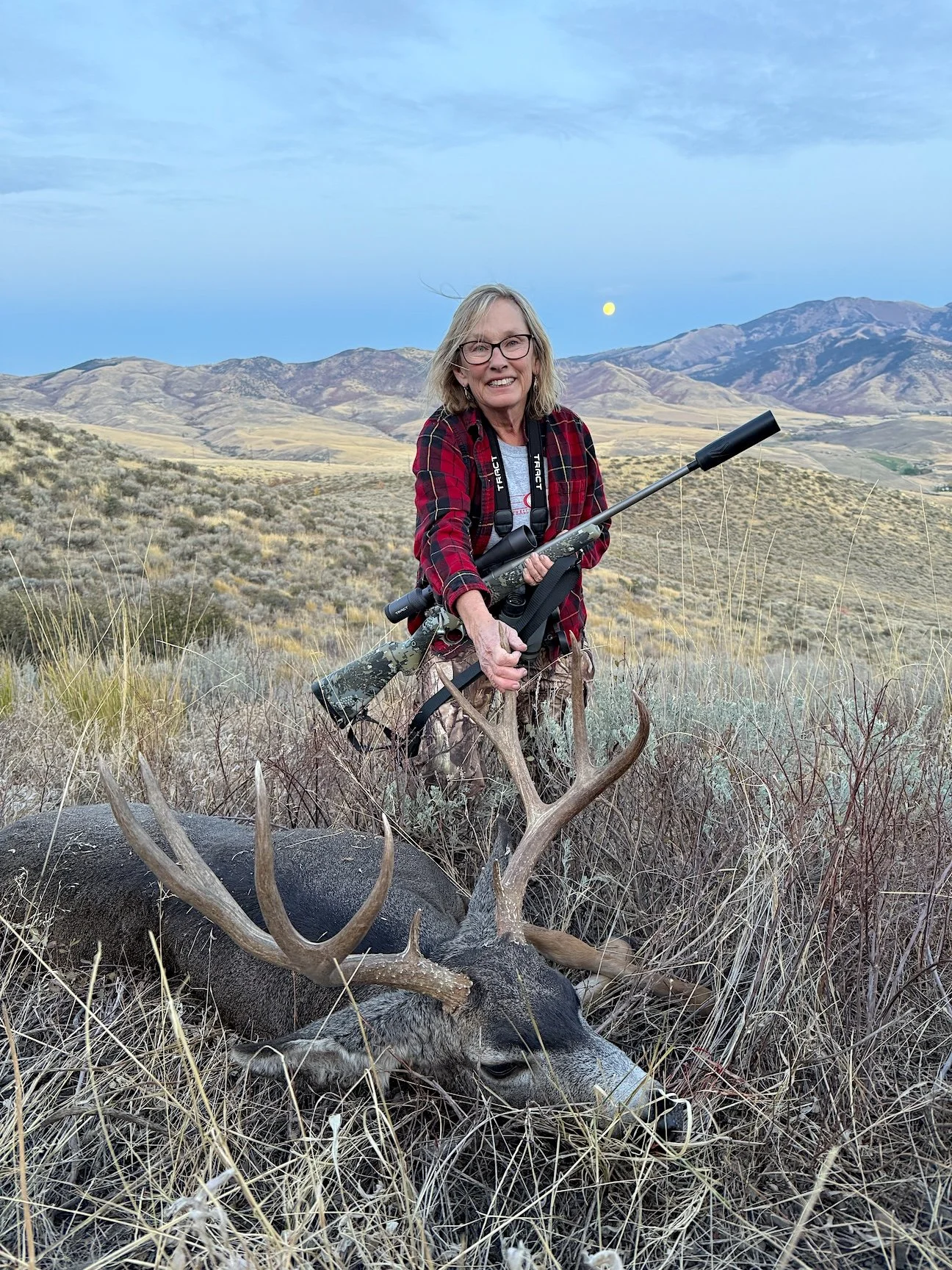Betsy Bags a BAD Buck
Each October 10, Idaho opens a general mule deer season during which Betsy is tasked with collecting part of our extended family’s winter venison supply. She and I hunt from the house, usually finding a suitable “meat buck” within a half mile.
This year’s hunt started with temperatures reminiscent of July, so we skipped the first day or two, built some new handloads for her suppressed Kimber 7mm-08, and zeroed it. Then we sneaked out to the back 40 where we watched the dawn bloom into full Indian summer daylight. While we enjoyed the scenery, especially the orange maple foliage, we spotted no deer until we decided to quit.
While testing new handloads and zeroing her Kimber Adirondack 7mm-08, Betsy felt the scope wasn’t bright enough, so I swamped it out for a Tract Toric UHD 3.5-15x42 she found much brighter. Within two hours of zeroing it, she had her buck.
“There’s a buck. That 4x4 I saw along Louis Creek a couple of weeks ago.”
“Where?”
“Neighbor’s side of the fence, just over top of the juniper, about 400 yards out and just left of that green maple. Surrounded by sage.” We sized him up for a few seconds and declared him potential dinner before he dropped into a draw. End of the show.
“We’ll check back here tonight. I’ll bet he’ll hole up in Buck Basin.” They always do. Buck Basin is a small amphitheater with a cluster of brush and one middling maple tree for shade. The ridge behind it blocks wind and predators from the north and west. A long view to the south and east provides early warning for alert eyes. Bucks can escape over the top or down toward the bottom. Our best belly crawl over Sharptail Ridge from the east saddles us with a 350- to 380-yard shot.
Betsy and I sit on this ridge overlooking Buck Basin the first morning of each year’s deer hunt.
With the buck out of sight, Betsy rose and shuffled back off the ridge while I watched for any last-second visitors. Found them, too. A cow moose lumbered out of the neighbor’s draw, a young bull on her tail. I flagged Betsy down and showed her. Cool.
That evening we were back. The 4x4 was right where he was supposed to be. He’d brought along an understudy forkhorn. We crawled slowly and painfully over our ridge and set up three times for a prone shot, 383 yards, but the grass was always in the way. The light was bad and the distance long and we gave it up.
“How are we ever going to get him?” my blonde accomplice asked.
“We could come in from over Mac Mountain.” That was the hill on the north of the basin, a good option in a south wind that would put us within 150 yards of the sweet spot. Reaching it just took twice the effort of Sharptail Ridge.
Two days later we indulged the long climb up Clara Canyon to the base of Mac Mountain, then slowly up, a stuff south wind in our faces. Once atop, we took one step forward, glassed thoroughly, then took another step. After four of these I spotted antlers and ears. Two bucks right where they were supposed to be.
“We’ll put that sage and bitterbrush between us and crawl to them to try a shot,” I said. We did. Too much grass for prone. We shifted right. Still too much grass. Prone is the most difficult shot to get in good habitat where cattle haven’t eaten all the grass. The bucks were 143 yards away and oblivious.
“You’ll have to sit and shoot off my pack. I’ll stand it up.” Betsy got into a solid sitting position and leveled her Kimber Adirondack 7mm-08 Remington over my pack. I leaned against her for added support. “Steady sight picture?”
“Yes.”
“OK, let me know when you’re ready to shoot and I’ll call your shot.”
“Ready.” Poomph. That’s the best phonetic spelling I can come up with to describe the cough of a 7mm-08 through an 18-inch barrel capped with a Silencer Central Banish Backcountry can. My ears loved it.
“Where’d he go?” Betsy asked as she bolted in a fresh round.
“Straight down. You nailed him. Perfect shot.” The second buck didn’t depart until we rose, the muffled report failing to spook him. Lying in the grass and sage was Betsy’s biggest buck ever. After admiring, tagging, and photographing it, I hiked back for the knives, flashlights, and Ranger. After that came disappointment.
Having made a perfect one-shot kill, Betsy walks joyfully toward her downed buck. Note the tall bunch grasses that foiled all prone shooting attempts.
As I sliced up the brisket with my Diamond Blade Summit, I hit a substantial pus pocket. This might be a bit gross for the more genteel audience, but it’s Nature. Deer often develop pockets of infection from thorns, antlers wounds, etc. One cuts around them, cleans things judiciously, and no big deal. But the more I cut, the more infection I uncovered. We’d be eating no brisket off this buck. Then, as I pulled the heart and lungs back past the severed diaphragm, there was a major eruption of infection. Nearly a quart that continued in something like a narrow balloon-like sheath running along the tenderloin.
The local Conservation Officer came out the next morning to take tissue samples. He’d never seen anything quite like it, but agreed that we shouldn’t eat it. He offered us another tag, but we do not want to shoot another young buck off the ranch this year.
A local conservation officer checks our deer for disease.
Betsy was quite upset that her efforts resulted in a dead buck but no meat. Such is the nature of Nature. One does one’s best to procure organically grown venison fairly and discretely. The buck was never disturbed, let alone frightened or harassed. Just browsing one second, gone the next. Alas, somewhere along the line one of Nature’s less conscientious killers had attacked that deer. Who knows how long it might have suffered before withering away.
I commend Betsy for hiking, climbing, and crawling to set up for the perfect shot. She did our hunting heritage proud.
Forget all those tales of poor deer hunting under a full moon. This is Betsy’s biggest antlered buck ever. She loves the Banish Backcountry silencer on her 18” barreled Kimber 7mm-08.






